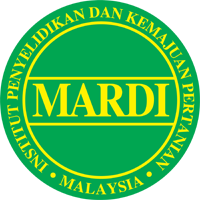Ang Kok Jee
Abstract
The growth and maturation of the gonads of Angelfish in a 0.01 acre (0.004 hectare) pond has been studied.The general morphology of the ovary and testis has been described.The oocytes were arbitrarily divided into four stages: Oocyte I. Oocyte II. Oocyte III and Ooclte IV. In the testis, the following germ cells can be recognized: primary germ cell, spermatogonia, mature when their standard length is 4.5cm. and when they are 130 days old. All fishes become mature when their standard length is 4.5cm and when they are 130 days old. All fish become mature at 5.18 cm. in standard length and when they are 160 days old. Thc eggs undergo regression and the sperms undergo phagocytosis in the gonads of adult unspawned fish. Growth rate was rapid in the early stages of the fish life cycle. The fish is an omnivore.Higher fecundity were observed in fish of 5.0 to 5.5 cm. in standard length.
Full Text ( 2 MB )








